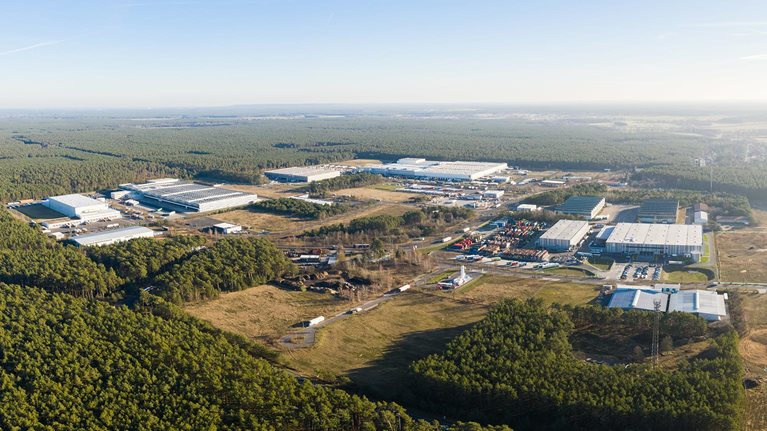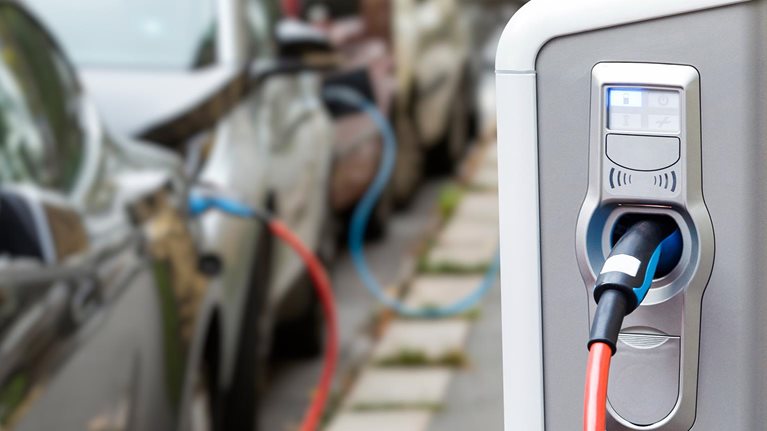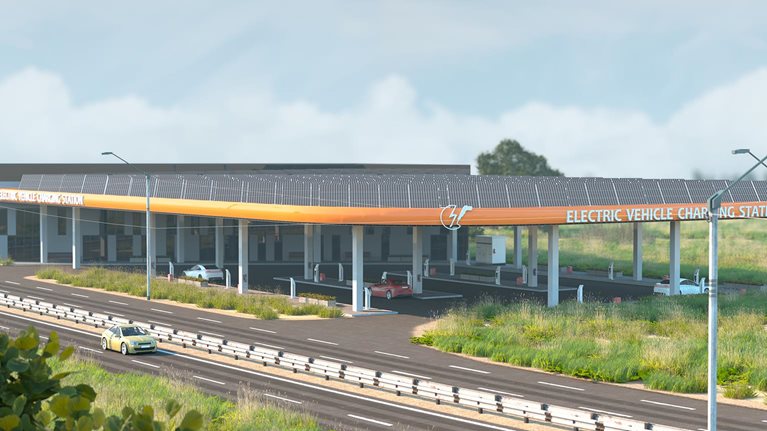As electric vehicle (EV)1 sales continue to gain market share, the demand for batteries is ramping up with 30 percent year-over-year growth around the world, reaching 3,900 gigawatt hours (GWh)2 in 2030. In some cases, supply cannot be scaled quickly enough to keep up. Established battery cell companies and emerging start-ups have announced combined plans to build production capacity of up to approximately 960 GWh in Europe alone by 2030, growing 20-fold from 2020 and accounting for 33 percent of global, announced battery cell production capacity of around 2,900 GWh in 2030. But as demand continues to accelerate, so too must supply. Building out the necessary manufacturing capabilities and capacities will require joint efforts across the entire industry—particularly by leading players in China, Europe, and the United States.
Electromobility demand is accelerating
In 2020, for the first time, the global number of EVs on the road surpassed ten million.3 This milestone comes amid accelerating EV uptake driven by three key factors: evolving regulations, OEM sustainability targets, and increased customer pull as OEMs broaden their product portfolios.
Evolving regulations
To meet the targets of the Paris Agreement, governments around the world are announcing a growing number of net-zero and carbon-neutral commitments.4 In addition to emissions and fuel-economy regulations, several countries have announced end dates for internal combustion engine (ICE) vehicle sales, with the earliest taking effect in Norway in 2025. Based on the regulations to date, ICE phaseout targets will affect almost 50 percent of global car sales by 2030.
OEM sustainability targets
OEMs have started announcing ICE phaseout dates of their own. To date, most of the largest OEMs have committed to increasing EV sales significantly over the coming years or have already defined phaseout dates for ICEs. As a result, at least 50 percent of global car sales will be affected by OEM targets for phasing out ICE vehicles by 2050.
Increased customer pull
Global EV sales rose by a record 43 percent in 2020, with 3.2 million EVs sold. This means the global market share of new EV sales increased from 2.5 percent of all new vehicle sales in 2019 to 4.6 percent in 2020.5 That same year, the average driving range of new EVs increased to 380 kilometers from 230 kilometers in 2015. And in many countries the total cost of ownership of EVs became cheaper—for example, in the United States, driving electric can save a consumer $6,000 to $10,000 over the lifetime of the car.
Would you like to learn more about our Operations Practice?
The need for additional supply
The surge in demand for EVs is on pace to outstrip supply of battery cells in the coming years, based on the announced build-out capacity to date. A base-case EV uptake scenario requires more than 3,900 GWh of battery capacity globally by 2030 with passenger cars accounting for roughly 2,400 GWh, while an aggressive uptake scenario requires an additional 600 GWh. Geographically, the need varies; battery cell demand will remain highest in China, followed by Europe and the United States.
That said, additional cell capacity estimates based on the announcements of battery cell manufacturers sum to a global supply of approximately 2,900 GWh by 2030 (exhibit). Overall, 60 new gigafactories6 with an average production capacity of 25 GWh are being planned for construction globally by 2030. There is a tendency for gigafactories to become larger on average, in some cases reaching up to 100 GWh.

To meet overall demand in time (beyond passenger vehicles to include trucks and buses, among others), additional capacities to those already announced are needed from 2023 onward. A key challenge to anticipate will involve buildup of gigafactory-scale production lines and the typically delayed ramp-up as factories come online, given that most gigafactories require three to six years to ramp up to full capacity. Battery production will include a wider range of companies with different levels of experience; around 10 percent of the total 2030 supply target has been announced by start-ups with limited experience in battery production at scale. And automakers and battery producers and their supply chains will also need to get up to speed on technology diversification, particularly around evolving battery anode and cathode chemistries.
Overall capacity obscures certain regional differences in supply capacity and risks, with battery cell manufacturing footprints increasingly on a “regional for regional” model, with a strong focus on climate and Scope 3 decarbonization targets for OEMs and customers alike. The United States in particular is in need of additional capacity commitments, as current commitments will fail to meet projected demand by 2025. And while capacity in China and Europe appears to be better covered based on announcements already made, the implementation risk is highest in Europe, where 25 percent of cell capacity in 2030 has been announced by start-ups.
Joint efforts to activate the battery cell manufacturing industry
Today, a majority of companies that specialize in battery cell manufacturing equipment are in China, Japan, and South Korea. However, many Asian battery cell manufacturing suppliers are operating at more than 95 percent capacity, leaving little room to increase output, and might prioritize orders from their existing local customers over those from new European market entrants and those from other regions. This creates an opening for manufacturers from Europe, the United States, and other regions to join the effort to activate the battery cell manufacturing industry.
The strong build-out of battery gigafactories will likely require direct investments of more than €300 billion by 2030 alone (approximately €100 billion in Europe and €65 billion in North America). Gigafactory construction is complex, requiring the integration of numerous capital expenditures, such as building, infrastructure, energy, and different machine types, as well as specific areas for testing and dry rooms, among others.

Voices on Infrastructure: Scaling EV infrastructure to meet net-zero targets
The following targets and priorities can help jump-start progress:
- Build battery production capacity. Prior to start of production, on-time and on-quality battery cell manufacturing equipment supply will be crucial to achieve targeted yield or output performance. The supply of coating equipment is especially at risk of shortage or delay, given its high specificity to battery cell manufacturing, as well as the limited number of regional machinery players with the required expertise, high utilization of equipment production capacity, and full order books. Access to construction labor is also essential, and challenging in many markets.
- Expand active material production capacity. Additional active material production capacity—especially in Europe and the United States—is required to support or enable battery production in general and sustainable, local supply chains in particular.
- Secure access to the most critical raw materials, especially nickel, lithium, and cobalt, but also graphite. This might require direct investment or co-funding by downstream value-chain players to unlock new mining capacity.
- Ensure circularity. Closed-loop systems for the second life of batteries need to be established to mitigate raw-material supply risks, optimize the battery carbon footprint, and improve economics of the battery recollection obligation for OEMs.
Other investments will be needed not only to enable a truly sustainable and circular battery supply chain but also to meet net-zero targets set by auto OEMs. The electrification of equipment, operational-efficiency improvements, and use of green electricity will require further investment to supply low- or zero-emissions batteries so that the CO₂e⁷ emissions of EVs are competitive with those of ICE vehicles.
Finally, the battery manufacturing workforce will need to be increased. On average, a 40 GWh gigafactory requires more than 2,000 full-time skilled employees. This means there is significant need for a new and skilled workforce. Filling these positions is critical to ensuring battery cell manufacturing meets demand, and will require strong efforts across the industry.
Industry players that approach battery cell manufacturing thoughtfully and with an appropriate sense of urgency will likely reap the benefits of expanding into a lucrative new market. With emissions targets locked in place, the course is set to provide consumers with cleaner, greener transportation options.


